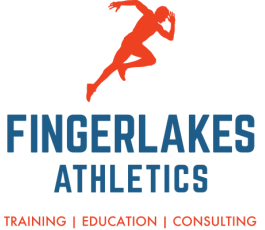|
When it comes to injuries we all want to keep our athletes healthy. If it was possible to know who would suffer an injury we would try to identify that person and add in prevention strategies. There is some good news on that front. Performing a balance excursion test can help to identify those athletes at risk of suffering a knee or ankle injury.
The test is fairly easy to perform and the down and dirty method is to visually look for differences side to side. A link to a video demonstrating the test can be found here: www.physio-pedia.com/Star_Excursion_Balance_Test To make things even easier for you to administer, performing just the anterior motions (the first 4) are effective in identifying differences that can lead to increased risk. The cutoff for injury is 4cm, which can be hard to see, but if you pay careful attention and mark the movements you will be able to determine those differences. In the event that your athletes show a difference side to side and you are concerned they are at risk for injury, implementing the usual injury prevention exercises are effective at modifying risk. Simple exercises to perform are single leg balancing on an unstable surface, squatting, single leg squatting, lunging, jump training and core strength. Or, to make things even easier for yourself and your team, just incorporate all those exercises into your daily warm up. While not every injury is preventable, it is in our athletes best interest to identify those that are at great risk and work to minimize that risk. Conclusion: 1. Learn how to perform the Star Balance Excursion Test and test your athletes 2. Identify those that might be at greater risk and implement injury prevention strategies References: Plisky, P., et. al. (2006). Star excursion balance test as a predictor of lower extremity injury in high school basketball players. Journal of Orthopedic & Sports Physical Therapy, 36(12). www.jospt.org/doi/abs/10.2519/jospt.2006.2244?code=jospt-site Stiffler, M.R., et. al. (2017). Star excursion balance test anterior asymmetry is associated with injury status in division 1 collegiate athletes. Journal of Orthopedic & Sports Physical Therapy, epub March 29, 2017. www.ncbi.nlm.nih.gov/pubmed/?term=Star+Excursion+Balance+Test+Anterior+Asymmetry+is+Associated+with+Injury+Status+in+Division+I+Collegiate+Athletes
1 Comment
5/3/2017 11:22:59 am
Athletes tend to break their bones nowadays. They have weak resistance and have soft body structures. It's normal, because the exercises and programs nowadays, are a lot easier than before. Their coaches and mentors should closely look upon their fitness programs. If they're too careless, it might have critical effects to their careers.
Reply
Leave a Reply. |
AuthorI write on sport management, fitness, sports medicine and business topics to help you reach your goals Archives
February 2024
Categories
All
|
|
Home
About Contact |
To learn more about what services we offer, to schedule an appointment or to get prices please contact me at
[email protected] (607)279-6791 *This site is for educational purposes only, it is not meant to diagnose, treat or replace medical advice. Before starting an exercise program always make sure that you are healthy and able to do so safely.* |


 RSS Feed
RSS Feed